What are parking wheel stop placement standards?
Wheel stops are among the most important road safety devices used to park cars in relatively limited areas of home garages accurately and professional parking lots.
With their use, cars are safely parked as the wheels are blocked before they hit walls of the parking lot or other parked cars and avoid damage.
Generally, wheel stops are used in the parking areas, but it does not mean randomly placing them without knowing the standards to use them anywhere.
There are basic standards and proper placement guidelines to get maximum benefit.
So, whether it is your driveway, roadway, warehouse, or simply apartment parking zone, make sure to get these placement standards before moving to any final step.
Do you want to know more about this topic? We also have an article talking about wheel stop standards.
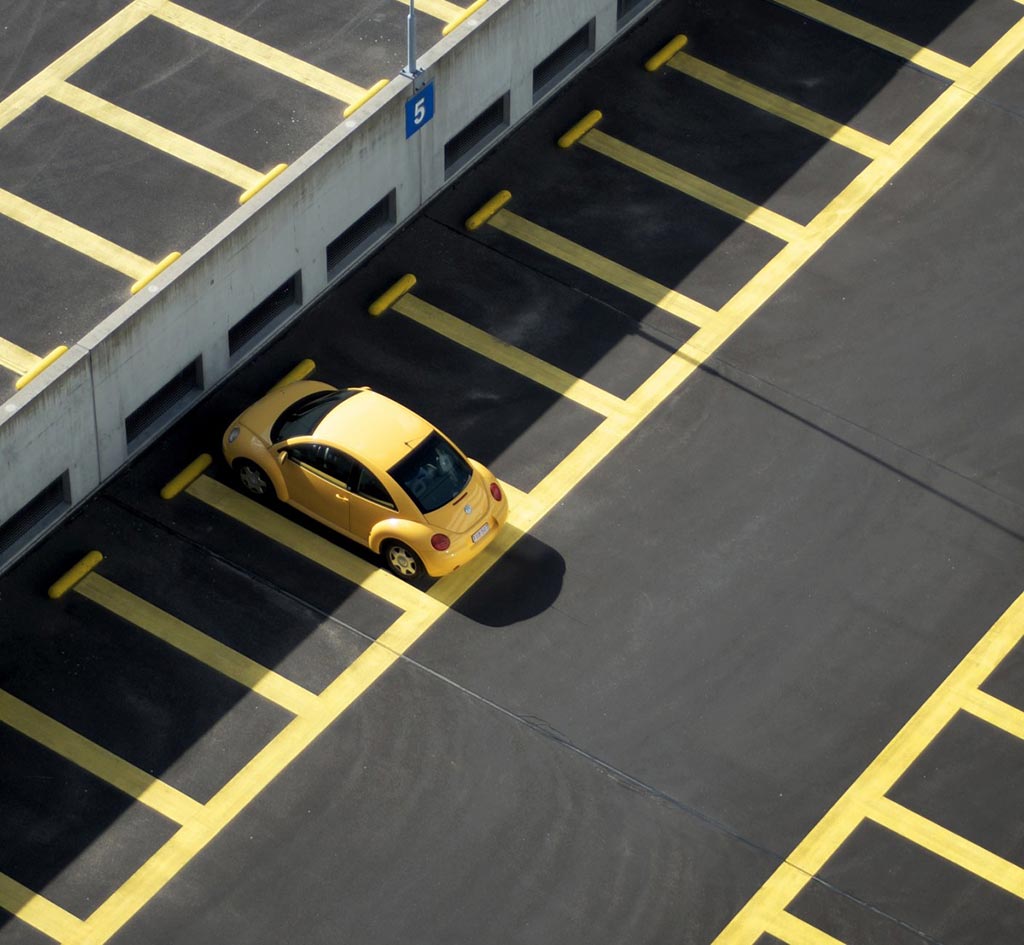
Where should wheel stops be placed?
Wheel stops are traffic management equipment used when cars, motor vehicles, trucks, and other heavy traffic are a concern.
These devices give confidence to new drivers, teen drivers or even older people to safely drive and park at the parking space without impact to the property and nearby vehicles.
So, you can get an idea of the sites where wheel stops should be placed:
- The first and foremost site is the residential areas that highly need wheel stops for pedestrians’ and drivers’ safety. Driving in your garage or driveway can sometimes be tricky, and you cannot guess when to stop.
Losing control over the steering wheel or failure to stop the car result in a collision that add cost to repair the vehicle plus the property revamp.
- The front of the stores, plazas, restaurants and other markets have high traffic volume, and the customer parking is close to the front window. People often cannot determine the exact point of stopping their cars and accidentally hitting the front windows.
In such a case, using wheel stops between the storefront and the parking area can limit damage to a great extent.
- You can also place wheel stops in parking spaces adjoining a public street. Typically, different types of drivers park their cars in the parking areas.
Though most of them are highly experienced with driving skills but poor driving by some drunk drivers or new drivers can impact your vehicles. So, it’s wise to use wheel stops in public parking zones.
- Warehouses and factories are the next sites with high oncoming traffic, and using wheel stops at these locations saves vehicles and benefits pedestrians.
- Wheel stops can also be used along fence lines to stop cars from overparking, protecting pedestrians from accidental collisions.

You have already read a good part of this article, 👀
We've
got the impression that you like it. 🙂
👇🏻
IF YOU ARE LOOKING TO WORK DIRECTLY WITH A MANUFACTURER,
FEEL FREE TO CONTACT US. WE ARE VERY HAPPY TO HELP!
What should wheel stops be spacing?
Wheel stops should be placed at a reasonable distance not to block the entire passageway.
Whether you want to install wheel stops in street parking, disabled parking, parallel parking or garage parking, don’t forget that successive wheel stops should be at least 3 feet apart.
This spacing between adjacent wheel stops allows drivers to comfortably position their vehicles at the parking spot.
Similarly, you must be careful when planning parking structures and keep all-wheel stops equally spaced.
For instance, if you provide a parking facility or paid parking, ensure wheel stops are placed at a distance to allow vehicle movement, plus the driver.
Keeping the distance between consecutive parking blocks restricts free movement, particularly in handicapped parking.
In addition to spacing in car parking, you must not forget the alignment of the wheel stops. Parking spots have perfectly aligned wheel stops as mismanaged wheel stops decrease parking space and make it difficult to park motor vehicles.
Therefore, it is necessary to make accessible parking with signage, ramps and proper entrances to avoid car crashes and falling accidents among pedestrians.
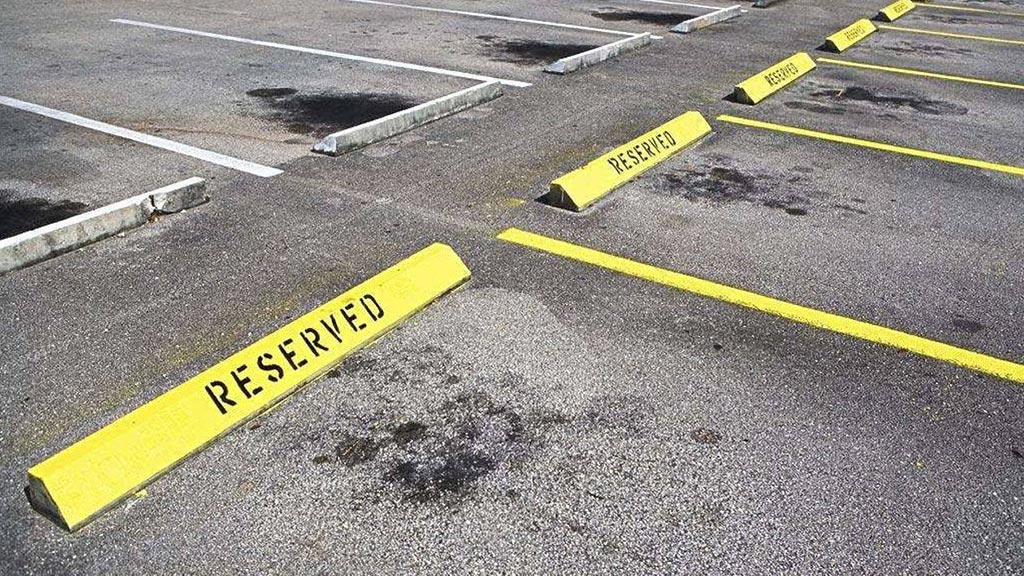
How far should a wheel stop be from a wall?
Regarding wheel stops from the wall, remember it depends on the parking direction. As there are front-in and rear directions of parking sites, so is their distance to the wall.
When reverse-in parking is likely, and the encroachment over the end of the parking space is not desired, the wheel stops should be positioned at the rear in position, and all vehicles are required to back in.
Therefore, front-in parking sites should be about 2.5 feet from the parking to the wall. At the same time, keep 3.5 feet wheel stop distance for the rear-in parking side.
This space keeps the vehicles and property at an ideal distance to avoid accidents.
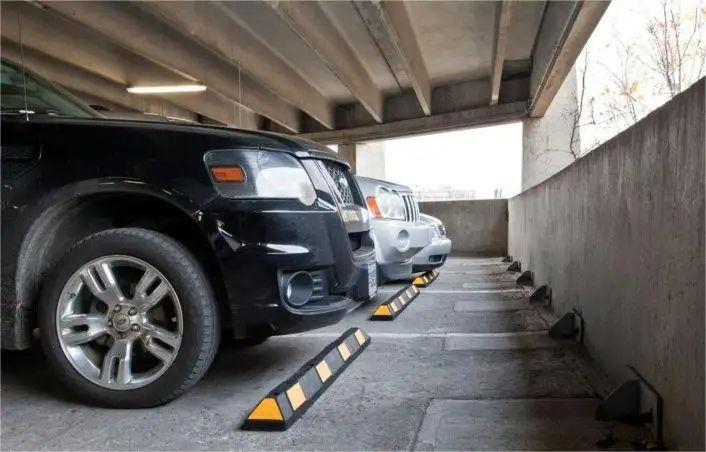
What is the correct wheel stop distance from the kerb?
Again, the correct wheel stop distance from the kerb varies for front and back-in parking. When the parking to the kerb is less than 150 mm high, the distance for front-in parking should be 2 feet, and for back-in parking, it should be around 3 feet.
Thus, it depends entirely on the parking regulations and enforcement that make the city parking structure easy for users.
The parking management or authority can decide on a plan for oversized or small parking areas to utilize maximum space.
Sometimes people don’t understand the markings for long-term parking zones and go without any solid plan resulting in no more space after a few vehicles.
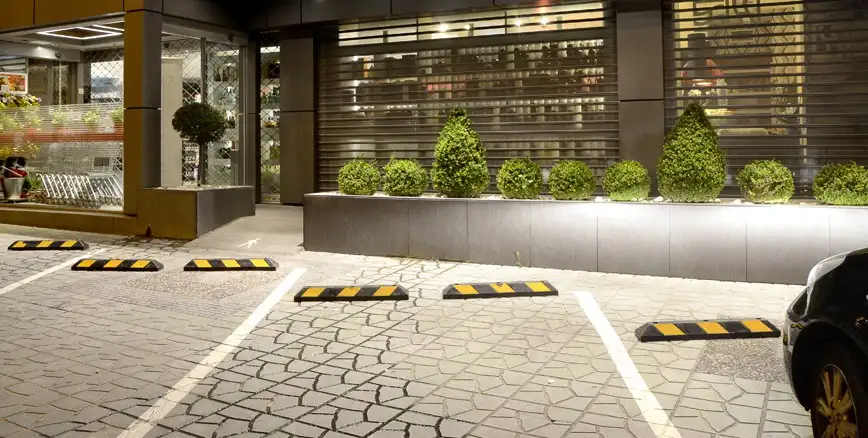
Are wheel stops permanently placed?
Wheel stops give permanent or temporary parking options in downtown parking garages, public parking areas, visitors’ parking sites and free parking spaces. The use of wheel stops entirely depends on your need, and you can benefit from their permanent fixtures or temporary placement.
If it is your personal property where several cars are parked daily, and you want to use the car parking space skillfully, you must go for permanent installation of the wheel stops.
You can design a parking layout in such a way as to allocate specific space for different vehicles as per their size using wheel stops.
On the other hand, making parking areas for the short term is also possible with wheel stops that would otherwise be inconvenient and hazardous to pedestrians. There are simple installation plugs and screws with the wheel stop kits, and you can fix them on asphalt or concrete surfaces.
When the job is done, and you no longer need them, unscrew the set-up and take them off. Just give your wheel stops a bit of cleaning and keep them in a safe place to use at any other site.
Thus, make the parking spaces available for everyone and ensure the safety of vehicles, property and pedestrians.
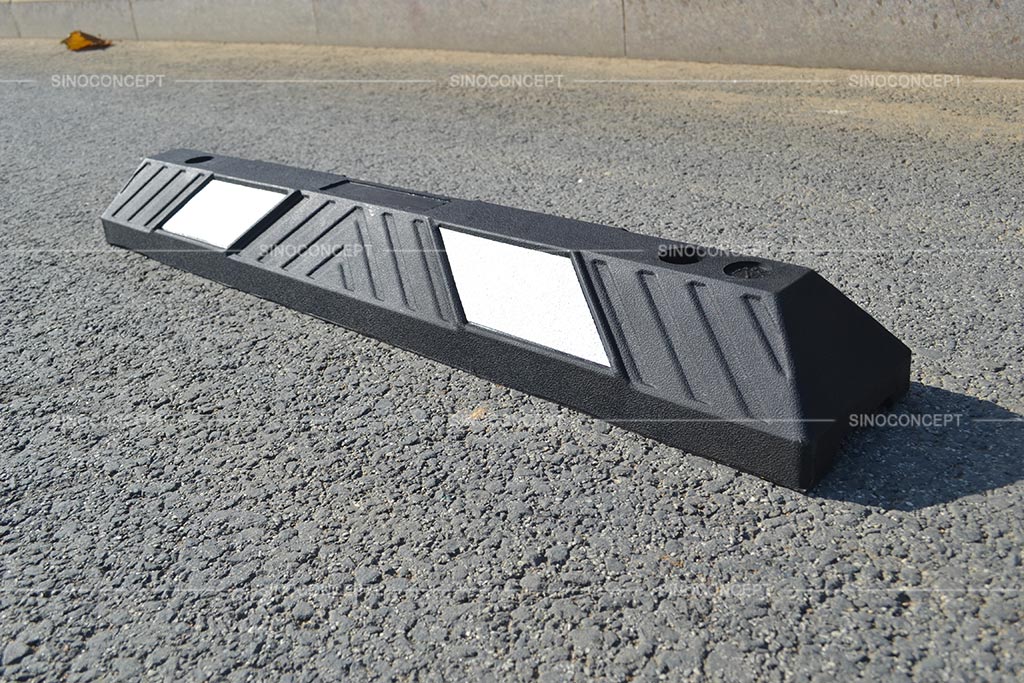
Conclusion
Wheel stops are a great way to make parking zones user-friendly, but the concern is using parking blocks correctly.
Using wheel stops in the wrong places confuses drivers and makes it hard for vehicles to enter and exit the parking zone.
Above all, buildings and other vehicles can be protected with the correct placement of wheel stops because they also guide and assist drivers in driving cautiously.
Thus, ensure a parking permit and give users parking facilities in off-street parking spaces, public parking garages, residential parking, employee parking, or city parking garage.
When parking and transportation are safe, there will be no risk of car crashes and accidents of motorists, bicyclists, and other heavy-duty vehicles.
👇🏻
IF YOU ARE LOOKING TO WORK DIRECTLY WITH A MANUFACTURER,
FEEL FREE TO CONTACT US. WE ARE VERY HAPPY TO HELP!





















